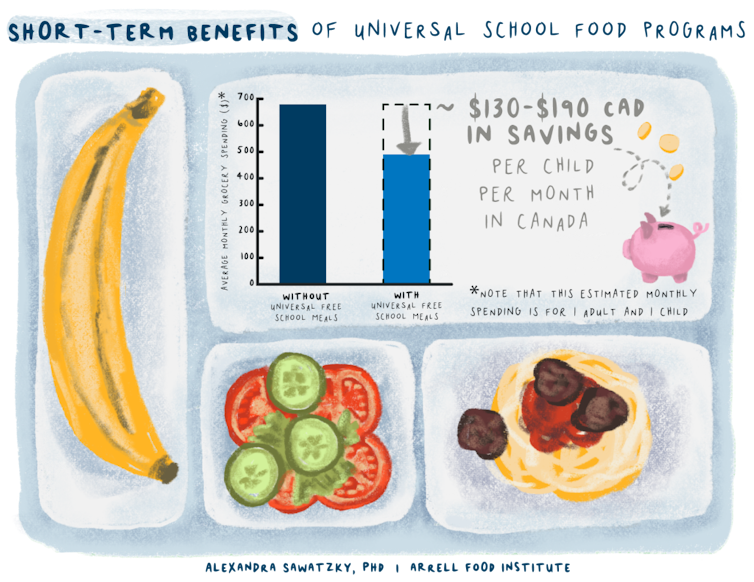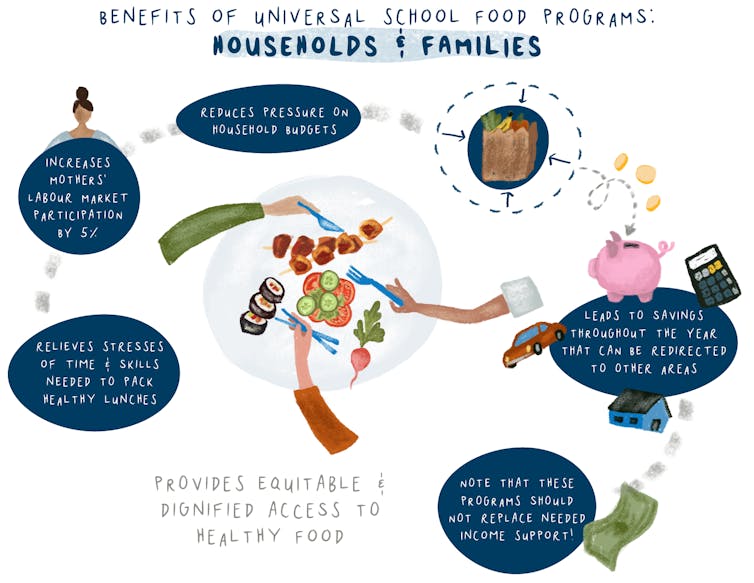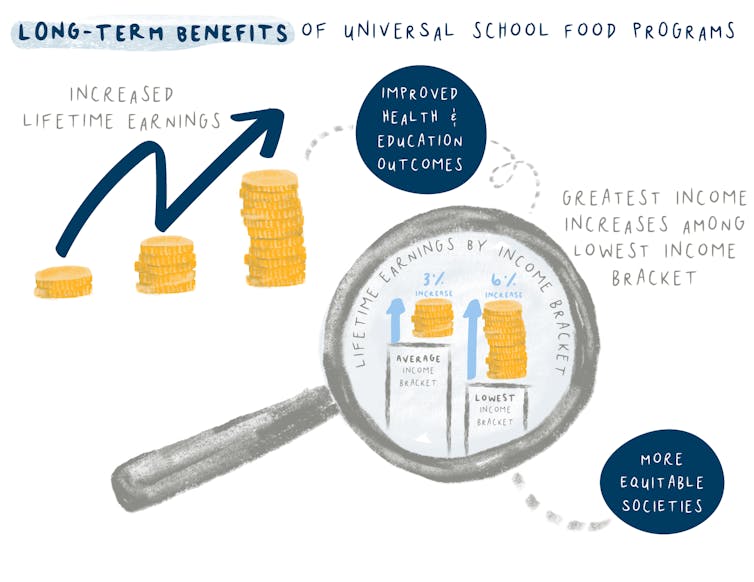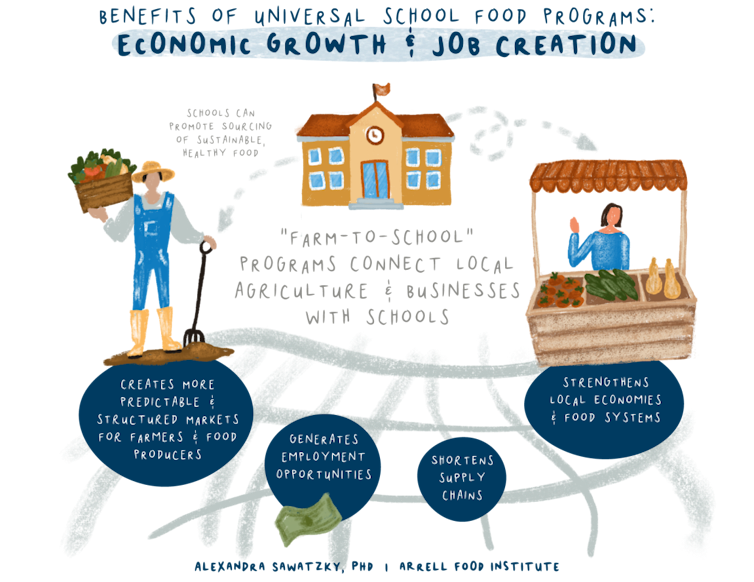The economic case for investing in school meals

The return on investing in universal school meals is clear. According to our new report, universal free school meals (breakfast and lunch for students regardless of income) have 2.5 to seven times the return in human health and economic benefits in comparable high-income countries.
The quality of student diets in Canada across all socio-economic backgrounds is poor, with only a small fraction meeting Canada’s Food Guide recommendations.
Studies have shown that school-provided meals offer higher nutritional quality compared to home-packed lunches in many countries, including Canada, the United States, the United Kingdom and Denmark.
A national school food program would join Canada’s universal child care program and the Canada child benefit as a crucial social support, bringing immediate relief to families while also delivering several short to long-term economic and social benefits.

(Alexandra Sawatzky/Arrell Food Institute), CC BY-NC-ND
Immediate relief to household budgets
Healthy food has become unaffordable for many Canadian families. In 2023, Canadians spent less on food, despite rampant cost increases, and this is only predicted to get worse.
The 2024 Canada’s Food Price Report anticipates an annual increase of $701 in food costs per four-person household, which means Canadian families can expect to spend $16,297 on groceries this year.
Universal school meals could save families between $129 and $189 per child per month on grocery bills, according to our report.
Universal school meals would put more money back into the pockets of Canadians, helping them keep up with the increased cost of living and allowing them to afford healthy meals when their children are not in school.

(Alexandra Sawatzky/Arrell Food Institute), CC BY-NC-ND
In Sweden, one study found that participation in a universal free school lunch program led to a permanent household income increase of 2.6 per cent.
Importantly, this permanent increase was not attributed to reduced household food expenditures, meaning school meals can help increase affordability in the short-term and increase household incomes in the mid-term.
Supporting women in the workforce
Preparing healthy school lunches is tough when parents work long hours. Universal free school meals support parents — particularly women, who often spend more time making meals — by saving money and time, reducing financial stress, and guaranteeing kids eat well at school.
This allows women to focus better at work, reduces interruptions and helps them achieve a healthier work-life balance, leading to increased productivity and career advancement opportunities.
In fact, the same Swedish study that was previously mentioned found that access to a universal free school lunch program increased mothers’ labour market participation by five per cent.

(Alexandra Sawatzky/Arrell Food Institute), CC BY-NC-ND
In China, the introduction of school lunches led to a nine to 14 per cent increase in mothers’ working hours per week, with the greatest increases among low-income mothers and mothers in rural communities.
Overall, this means that in addition to increasing household income, universal free school meals can increase women’s workforce participation, thereby supporting gender equality, individual economic prosperity and national economic growth.
Increasing earnings, reducing inequality
In the long-term, universal free school lunches can also improve children’s health, academic performance and subsequent economic outcomes throughout life.
The previously mentioned Swedish study found that students exposed to a school lunch program throughout the entirety of primary school had three per cent higher lifetime earnings compared to students that did not participate due to improved nutritional health and education outcomes.
Among children from households in the lowest income bracket, access to free school lunches led to a six per cent increase in lifetime earnings. The program had the greatest positive impact on students from low-income households, showcasing the role school meals can play in reducing socioeconomic inequalities in adulthood.

(Alexandra Sawatzky/Arrell Food Institute), CC BY-NC-ND
Growing Canada’s agri-food economy
Universal school meals can also support the Canadian agri-food sector. A national program has the potential to stimulate the creation of as many as 207,700 jobs.
Investments in school meal programs in the U.S. have led to the creation of jobs in food service, agriculture and nutrition and program administration, fuelling economic growth while curbing unemployment.
Furthermore, by adopting a farm-to-school approach similar to that in the U.S., Canada could support local farmers and suppliers. According to estimates from the U.S. Department of Agriculture, every dollar allocated to such programs generates an additional $1.30 to $2.60 in local economic activity.
Similarly, in British Columbia, every dollar allocated to procuring provincially grown food for public institutions yields a twofold return to the economy, showcasing the significant economic benefits of supporting local agriculture.

(Alexandra Sawatzky/Arrell Food Institute), CC BY-NC-ND
School food programs are recognized internationally as one of the most successful drivers of health and education among schoolchildren and increased productivity when they become working adults, as reported by the World Food Programme.
Our new research summarizes the strong economic rationale for investing in school meal programs in Canada. Universal school meals can not only provide immediate relief to families, but also build a legacy of improved public health and economic prosperity for generations to come.
An investment in a national school food program today is an investment in a stronger Canada tomorrow.
Source link





